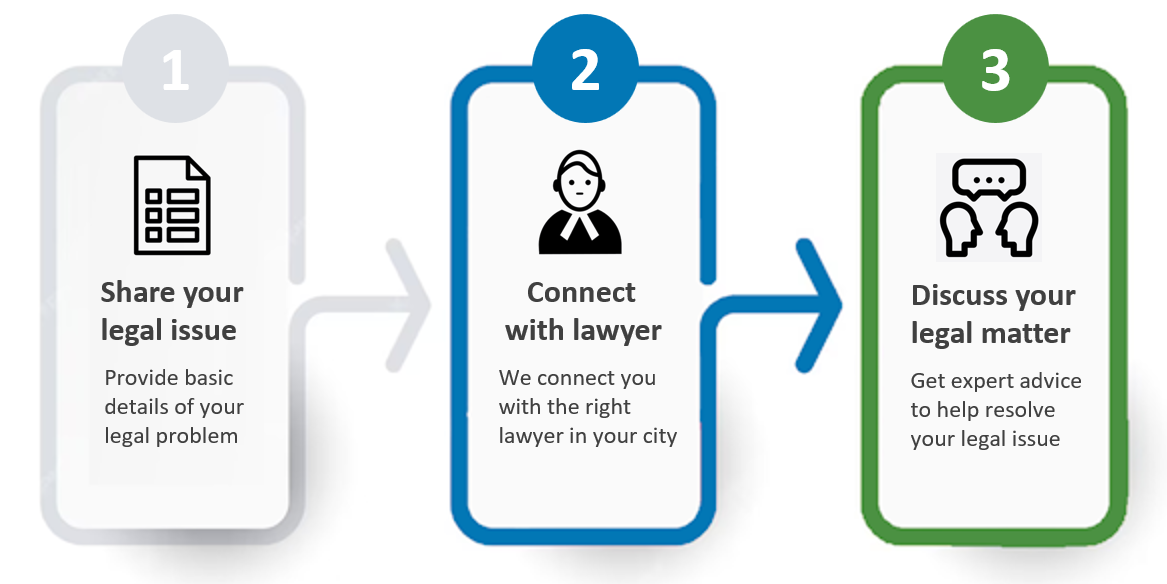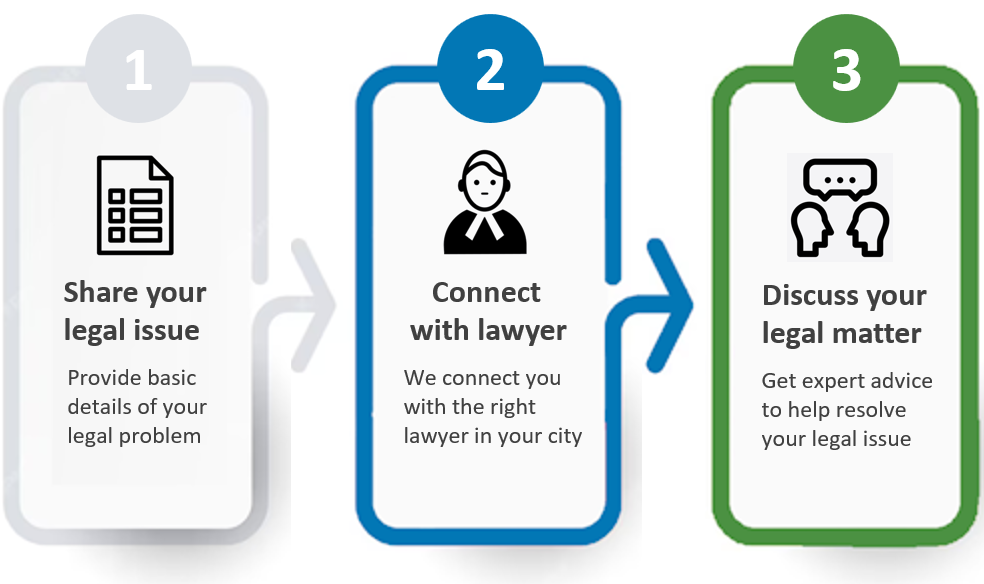Find, choose and connect with a lawyer from LawRato to file a mutual divorce petition or obtain legal advice online on the same.
Mutual divorce is when both spouses agree to end the marriage amicably. In this kind of divorce, both parties mutually agree on key issues such as child custody, division of joint assets, finances, maintenance, etc.
This type of divorce is the easiest and least complicated process to dissolve a marriage since it involves less conflict and contention.
If you want to file for mutual divorce, LawRato can help you! You can hire top-rated mutual divorce lawyers in your city by clicking here.
Certain conditions are to be fulfilled before filing a mutual divorce petition. Some of the conditions, as per the Hindu Marriage Act and Special Marriage Act are stated below:
1. Duration of Marriage – A joint petition for mutual divorce cannot be filed unless the parties have been married for a set time period of 1 year.
2. Mutual Consent – The Court ensures that there is mutual consent between the parties filing for mutual divorce.
3. Separation Period – A mandatory 1 year period of separate living is considered by the court before finalizing the divorce.
4. Agreement between Parties – There should be an agreement between the parties with respect to settlement terms such as maintenance, alimony, child custody etc.
Unlike in contested divorce, the laws do not prescribe any particular grounds on which the couple may file for mutual divorce. Mostly, mutual divorce is filed due to the inability of the spouses to resolve their disputes due to which they are unable to live together again.
As per Section 13 B (2) of the Hindu Marriage Act, in a case of mutual divorce, the court granted a mandatory six month period to rethink the decision of divorce. At the end of this cooling-off period, either party can decide to withdraw their consent to mutual divorce. This fixed time period of 6 months was given by the court with the intention of saving the marriage.
With the new divorce rules in 2023, this mandatory waiting period for mutual divorce is now discretionary. Thus, the court may waive off this time period if the spouses agree, thereby expediting the mutual divorce case.
For mutual divorce, the following documents may be required:
1. Address proof of the parties
2. Marriage certificate or proof of marriage
3. Child related documents in case child custody issue is involved
4. Photographs depicting the marriage of the husband and wife
5. Details regarding settlement of assets and properties
Additionally, other specific documents may be needed, based on the facts and requirements of each mutual divorce case.



Kanpur

Chennai

Noida

Delhi
It is not only a one-stop solution, but LawRato is also best for an individual seeking legal advice for the following reasons:
1. LawRato's network of lawyers puts an end to your "Lawyer near me" searches. With LawRato, you can choose from the top-rated lawyers practising in over 700 cities and 3000 courts across India.
2. LawRato provides detailed information on lawyers, their areas of expertise, and their experience, enabling you to make the right choices.
3. LawRato enables you to use legal advice online with assured speedy response.
4. Other effortless and time-saving options are also there if you don’t wish to contact a lawyer directly.
5. The client's privacy is paramount; every conversation between the client and the lawyer is private.
6. We ensure quick responses to every legal service that we provide.
A mutual divorce is the best way to end a marriage since it provides the parties an opportunity to part ways amicably on terms which are agreeable to both. Unlike a contested divorce, there is no losing party in a mutual divorce.
Q. Can LawRato provide me with a lawyer?
A. Yes, we at LawRato can help connect you with the right lawyer for your divorce from our wide network of experienced matrimonial/divorce lawyers. These lawyers will help guide you through the challenging period of litigation and ensure that your interests are best protected.
Q. Can I get free legal consultation for mutual divorce?
A. Yes, you can post your query on our portal and get free legal advice for mutual divorce from top rated lawyers in your city.
Q. What is the cost of mutual divorce in India?
A. The cost of obtaining a mutual divorce in India depends on various factors such as complexity of the issues involved like maintenance of the spouse and children, properties to be settled between them, court fee, lawyer and clerical fee, and the time taken to obtain such a divorce.
Q. Can consent from a mutual divorce case be withdrawn?
A. Yes, before filing the second motion, either party i.e. husband or wife can withdraw consent for mutual divorce. This step should be approached with caution as the court does not spare parties who misuse the first motion to gain advantage. It is, therefore, important to consult a good divorce lawyer at every step.